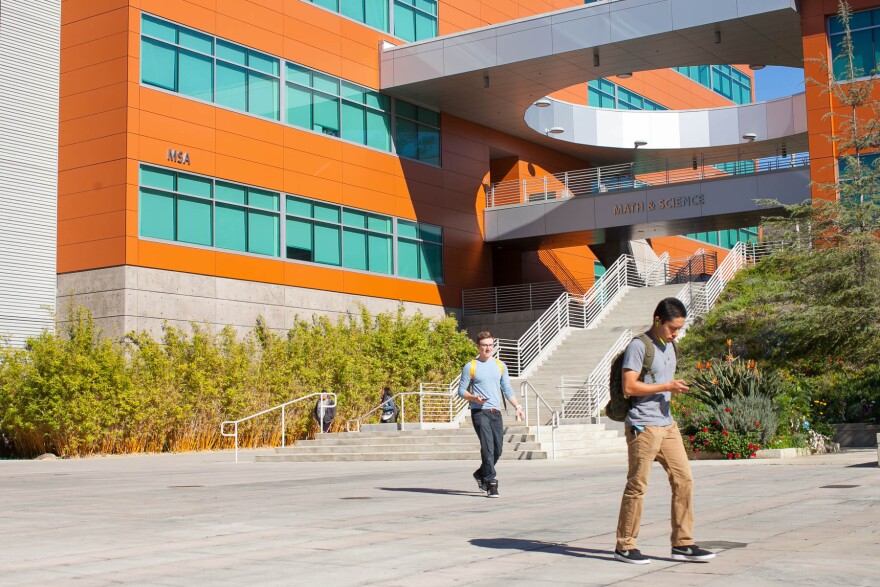Truth matters. Community matters. Your support makes both possible. LAist is one of the few places where news remains independent and free from political and corporate influence. Stand up for truth and for LAist. Make your year-end tax-deductible gift now.
This archival content was originally written for and published on KPCC.org. Keep in mind that links and images may no longer work — and references may be outdated.
Community college remedial program 'broken,' doing more harm than good, advocates say

A report out this week and a proposed state law take aim at the way California community colleges place most incoming students into classes to improve their skills. In a typical year, California community colleges rely mostly on placement tests to enroll about 170,000 students in one or more remedial classes to raise their skills, allowing them to do college-level work.
“Every layer of remedial coursework that we require students to complete reduces their chance of completing college English or math and therefore earning a degree,” said Katie Hern, a professor at Chabot College in Hayward and co-founder of the California Acceleration Project.
Students who score low on the standardized math or English test have to take one or more remedial classes. Hern said the test results are not a good measure of college readiness. More than three-fourths of students enrolled in remedial classes drop out.
“What we’re doing is not working,” said Julianna Barnes, president of Cuyamaca Community College in San Diego County.
Her campus is one of nearly two dozen that have made two significant changes:
- They use multiple measures, including high school grades and GPA, to decide if students need remedial classes
- Reforms to the types of classes in the remedial program
Cuyamaca College used to rely on placement tests and, depending on the results, required students to take as many as four remedial classes — that didn’t count toward their degree — before taking a college-level course. Now, she said, students take one remedial class at most.
“In the past, only 10 percent of students completed college-level math in one year, and the way we’ve increased that is that in one semester, 67 percent of our students were able to complete college-level math,” Barnes said.
Some campuses have eliminated remedial courses entirely and let students skip straight to regular classes. Students who do that, Hern said, do just as well as students not labeled remedial.
These reforms have yet to reach all of California’s 113 community college campuses, but a proposed law authored by Thousand Oaks-area state Assemblywoman Jaqui Irwin seeks to expand that.
If Irwin’s bill becomes law, California community colleges would have to use multiple measures to place students in remedial classes, and that placement couldn't happen without the college providing justification that a student won’t be able to succeed in the college-level class.








